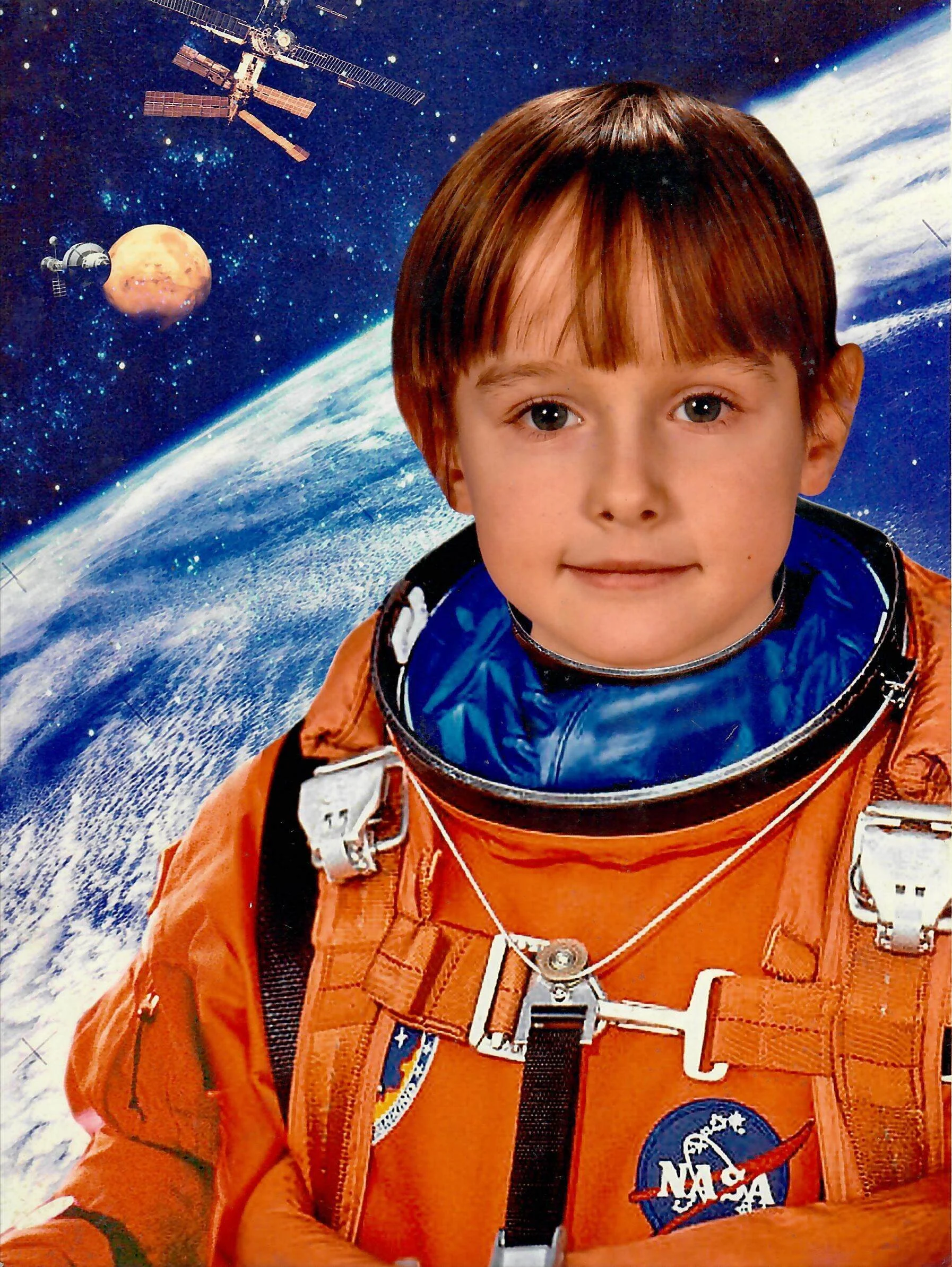

Last year, photographer Maksym Kozlov realized that hundreds of Ukrainians who grew up in the late 1990s had very similar childhood photos. The images would show them dressed up in odd costumes, or edited into strange scenes. He put out an open call to people to send their own versions, and with the resulting series My Beautiful Tomorrow, he asks what they might say about the strange period of Post-Soviet change the country was going through at the time.
While visiting a friend in a small Ukrainian town last Autumn, Maksym Kozlov noticed some familiar images hanging on a bedroom wall. They were old, professionally-shot photos of each child in the family dressed up in costumes as knights, astronauts and princesses. “The photographs drew my attention immediately because I recognized that the same ones are kept at my parents’ house in the Eastern region of the country,” Maksym explains. He posted an open call online, asking other people if they had photos of a similar kind, and he received a surprising amount of responses.


The images are a product of the late ‘90s and early ‘00s, when companies started taking photo studios to schools and nurseries and asking parents to pay to have their children photographed. Some would take boxes of costumes the kids could wear, and other, more successful companies would offer editing services.
Maksym pooled the photos together to create the series My Beautiful Tomorrow. He was interested in what they might represent, not only for the people who can see their childhood selves in them, but also for the country, which was experiencing a dramatic period of limbo when they were taken.

Ukraine declared its independence from the Soviet Union in December 1991, before Maksym was born, yet much of his work so far has been focused on the effects of the Soviet Union, and the resistance against it. His series of photographs Solarpunk explored the sun symbols that can be found on the gables of some houses in Ukraine. The symbol was a religious one, and was a sign of hope and freedom as it pushed back against the early Communists’ anti-religious policies.
Another series focused on a now abandoned Soviet housing project in Kiev. He placed photos around the block, archival images found on the pages of the monthly magazine Soviet Photo, drawing attention to the failed ideals of the regime.


Dreams about development and success remained Soviet.
Although things were certainly beginning to change in Ukraine closer to the millenium, ways of life hadn’t yet evolved a great deal. “Everything still looked the same. The new differences in social class didn’t change the approach to life,” Maksym says.
“Everything remained Soviet. The teachers believed it was imperative to follow the program, and everyone was still following the ‘master plan.’ It was worth doing sports only for the sake of victory. The new generation, born after the collapse of the USSR, hadn’t really thrown off the shackles of fear and shame which are still somewhat there now, being passed on through generations.”



Despite all this, here was this Western technology of photo-editing, seeping into the Ukrainian culture through these strange photo sessions. In Maksym’s small town of Melitopol, many people had never been abroad, and most didn’t have access to the internet, and people were still informed by magazines and local television; and yet these children could suddenly be anything their imaginations desired for just a moment in these photos. “This was all made possible by this new technology. In the Soviet costume tradition, characters like cowboys and Barbies just wouldn’t have been available,” says Maksym.
It’s not that there was no choice at all when it came to selecting a job under the Soviet Union, but the breadth of choices was certainly not too varied. “It was a curious situation due to the fact that the American dream began to penetrate the territory of the former USSR. It was possible to become an astronaut before, but a glamorous princess or a fighter from Counter Strike was very new,” Maksym says. “That pluralism of possibilities created a situation in which two disparate centuries met within these strange photos.”
We are all adults now and it’s perfect time to reflect on our childhood.

Many of the parents retained their old worldviews, as the culture remained largely the same despite the new capitalist system adding sprinklings of dreams of financial success. Yes, it might have been possible to dream of being a Formula 1 driver, which it wasn’t before. But, in the eyes of your parents, you’d have to be one that wins.
“The last fragments of the Soviet empire were barely visible. In this series of photographs we can see the cramped coexistence of the parents' idealized vision of happiness and success taken from the withdrawing century and the new imported values and technologies,” says Maksym.

For the kids, like Maksym, who were the subjects of these photos two decades ago, looking at them now feels strange. “The motivation to take a photo is often said to be for a keepsake, but in this series of images, I’m curious about what the real intention was with these photos,” he says. While it seems at first glance like an innocent game of dress-up, it could be said that they were the pawns in this strange coexistence of cultures Maksym talks about.
“I was inspired to collect these photos because this story is about my own generation. We are all adults now and it's the perfect time to reflect on our childhood which coincided with this strange, irregular period for the country.”

